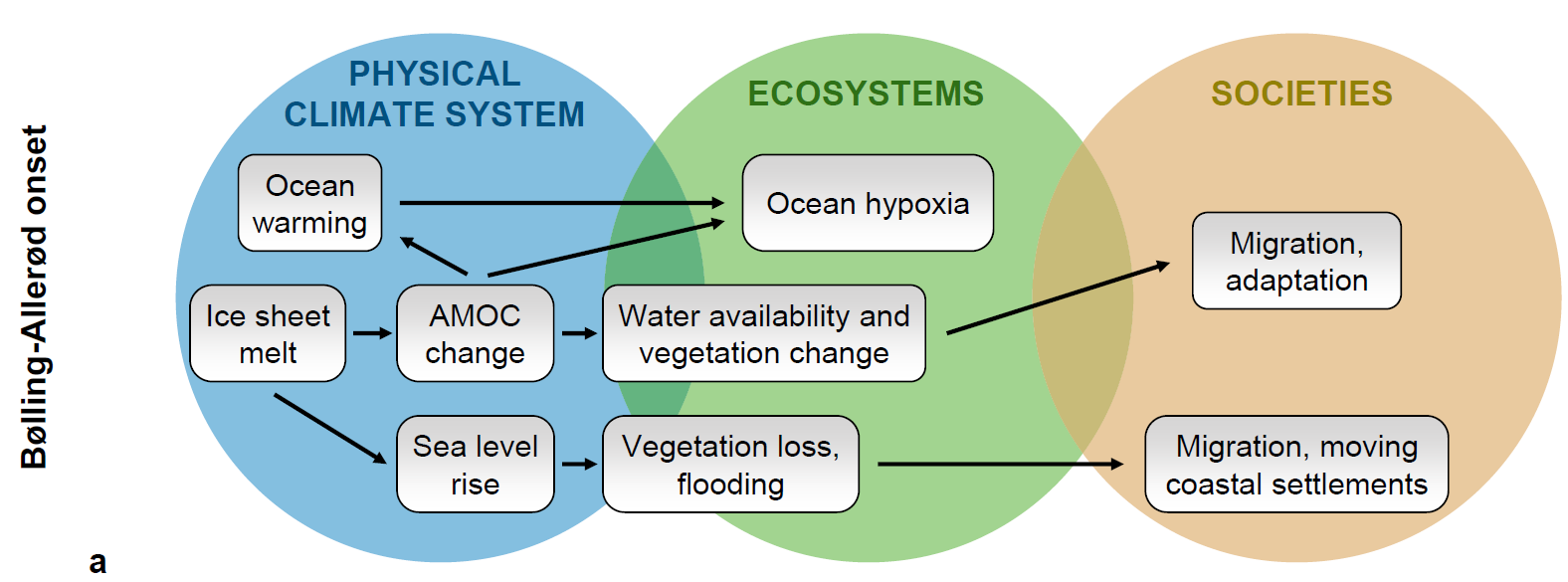Understanding past climate change 'tipping points' can help us prepare for the future

Of all the creatures on Earth, humans manipulate their environments the most. But, how far can we push it before something drastic happens?
Scientists are calling for a better understanding of past extreme climate change events in an attempt to anticipate future changes.
Enter geoarchaeologist and anthropologist C. Michael Barton at Arizona State University. The School of Human Evolution and Social Change researcher, along with Foundation Professor Sander van der Leeuw and an international and interdisciplinary team, published their analysis this week in the journal Nature Geoscience. The paper describes past abrupt climate changes, what led up to the “tipping points” for those events and what followed.
“We've been putting a lot of chemicals into the atmosphere and changing the heat of the atmosphere for a long time, and really intensively for 150 years,” Barton said. “And, things are still chugging along. Temperatures are slowly going up globally, but we haven’t seen a huge, dramatic shift. However, complex systems are potentially vulnerable if you push too much.”
Barton studies Earth’s many systems — specifically the water cycle and landscapes — and how humans alter these systems.
“People tend to look at how far you can push things before suddenly everything changes,” Barton said. “And that's what's considered the tipping point.”
Systems are everywhere
For a complex systems specialist like Barton, almost everything can be viewed as systems or cycles. A tree grows and dies, and the decay returns nutrients to the soil. Water cycles through the Earth in different forms like rain, runoff and evaporation.
Some of Earth’s major systems include the hydrosphere (water), the atmosphere (air) and the cryosphere (ice). All these systems are connected. This research on tipping points looks at the history of these systems to quantify small changes that can lead up to an abrupt, massive change, while also measuring how one abrupt change can trigger abrupt changes in other systems.
The paper explores prior research with sediment cores in the Gulf of Alaska, dust records in North Africa and ice cores from Greenland. All of this prehistoric data gives Earth system modelers and scientists a better idea of what Earth was really like hundreds of thousands of years ago.
Scientists have also been extensively studying Earth’s oceans. This includes the current levels of salt and oxygen, changes in circulation patterns and influxes of fresh water from melting ice sheets. Current ocean conditions can be compared to historic data gathered from the composition of the ocean floor, to make inferences about past ocean currents.
Major changes have happened before

This figure from the paper shows the cascading effects of the sudden temperature increase 14,000 years ago. This rapid climate change event is known as the Bølling Allerød onset, and the cascading effects were measured around the globe — including dangerously low levels of oxygen in the ocean near Alaska, abrupt increases in methane concentration in the atmosphere in Antarctica and an increase in tree cover in Western Europe.
The authors note past instances of extreme climate events happening so quickly that humans either had difficulties adapting, or were unable to adapt, to the new environment.
For example, about 1,500 years ago, abrupt cooling occurred in Europe, leading to changes in the vegetation. The authors note the cooling may have been caused by a natural phenomenon — volcanic eruptions. The vegetation and farming changes were so extreme that people experienced famine and societal reorganization. This timing correlates with the transformation of the Eastern Roman Empire.
The authors note how climate events centuries ago triggered drastic changes or even collapse in ancient civilizations due to unforeseen societal vulnerabilities.
One example is the ancient city of Angkor, which was located in present-day Southeast Asia. The people living in Angkor altered the natural water cycle by diverting water to grow crops. As the city grew, the water system in that region became so strained that it passed a tipping point. The system couldn’t handle more intense droughts and floods, and the city of Angkor collapsed.
Many unknowns remain
Arizonans know that the last few years have been drier and hotter than usual. Barton said it’s not yet clear whether we’ve passed a tipping point in the Southwest region.
It’s normal to see slight fluctuations in precipitation and temperature year to year. But recent studies of ancient climate make Barton wonder if the drier weather patterns have become the new normal for our lifetimes.
Barton also noted that researchers still don’t know why some weather systems change. For example, past monsoon rains have shifted without warning and for unknown reasons. This can be catastrophic for human populations, as those who depend on the monsoon experience intense drought, while others do not have the infrastructure to handle the influx of water.
There are still gaps in this field of research. More raw data needs to be collected and quantified, and some existing data lacks the precision and quality needed to create test models and simulate future abrupt changes.
The researchers also call for more analysis on the interactions between environmental systems and human societies during periods of climate change.
Lastly, improvements in Earth system models will help scientists be able to simulate possible abrupt changes humans may see in the near future. Current models are very good at simulating more gradual climate change, but are not yet able to simulate well-documented past abrupt changes.
The authors hope this paper raises awareness of the field and that more people will understand how analyzing the long-term past could help us in the near future.
For example, one component of tipping points research is identifying early warning signals. These are smaller fluctuations in a system before an abrupt change. The authors say these warning signals exist, but when the entire world is the focus, it can be challenging to trace how small changes in one system can warn of an abrupt change in another.
There is evidence of past warning signals. For example, there were abnormal shifts in the climates of the North Pacific Ocean region and around Greenland before the major melting of Earth’s last ice age.
“All the components can change really, really fast,” Barton said. “The whole system can drop into a different state … How do we know when we're getting too close?”
The authors leave the reader with this final thought: “As humans, we try to anticipate the future. We are now well aware that complex systems, including the coupled social and ecological systems that now dominate our planet, can undergo abrupt changes …. If we cannot model abrupt change in the past, we cannot hope to predict them in the future.”
The paper “Past abrupt changes, tipping points and cascading impacts in the Earth system” published July 29 and is co-authored by more than 30 researchers from across the world, including Barton and van der Leeuw.
Story by Taylor Woods, top image from Pixabay.com
More Environment and sustainability

Driving green desalination
Wilderness survival TV show hosts, pirates and water treatment researchers agree on one thing: Most natural water sources are not…

ASU preservation facility serves as test bed for rooftop heat mitigation
A roof coating that uses thermal energy storage materials from Arizona State University spinout EnKoat is halting the heat in…

ASU Carbon Summit displays sustainability leadership, collaboration and ... electric motorcycles
This month, a student-led initiative brought government officials, entrepreneurs and nongovernmental organizations under one roof…